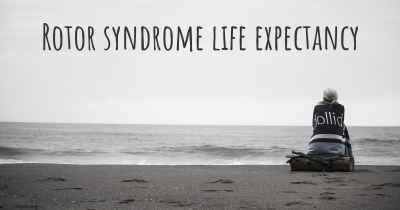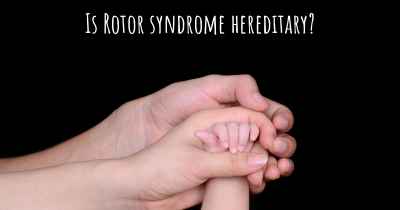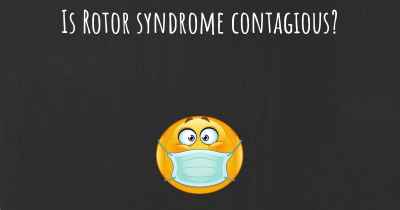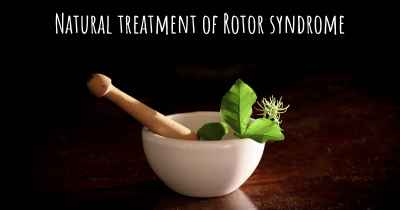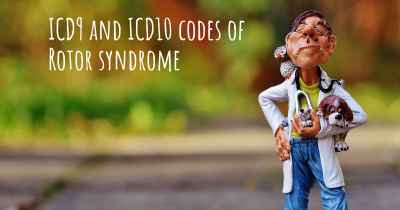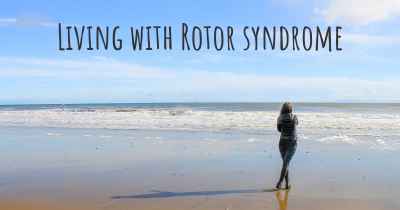What is the history of Rotor syndrome?
When was Rotor syndrome discovered? What is the story of this discovery? Was it coincidence or not?
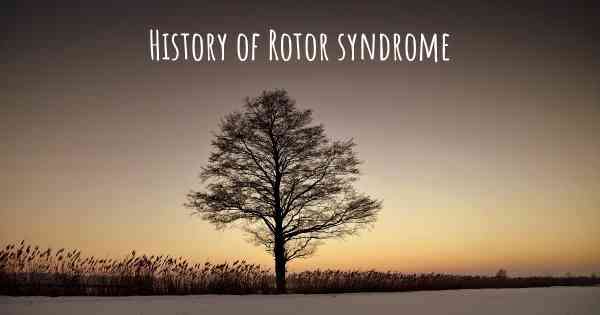
Rotor syndrome is a rare genetic disorder that affects the liver's ability to process bilirubin, a yellow pigment produced during the breakdown of red blood cells. This condition is characterized by elevated levels of bilirubin in the blood, leading to jaundice and other associated symptoms. Rotor syndrome was first described in the medical literature in 1948 by Dr. Zvi Rotor, a Czechoslovakian physician.
The discovery of Rotor syndrome was a result of Dr. Rotor's observations of a family with chronic jaundice that did not fit the criteria for other known liver disorders at the time. He noticed that the affected individuals had consistently elevated levels of bilirubin in their blood, but no signs of liver damage or obstruction. Dr. Rotor conducted further investigations and identified a distinct pattern of symptoms and laboratory findings that distinguished this condition from other liver diseases.
Since its initial description, several cases of Rotor syndrome have been reported worldwide, allowing researchers to gain a better understanding of the condition. Rotor syndrome is considered a rare disorder, with an estimated prevalence of less than 1 in 1,000,000 individuals.
The underlying cause of Rotor syndrome is a genetic mutation that affects the transport of bilirubin within liver cells. Normally, bilirubin is taken up by liver cells, conjugated with a sugar molecule, and then excreted into the bile. In Rotor syndrome, there is a defect in the transport proteins responsible for moving bilirubin from the liver cells into the bile. As a result, bilirubin accumulates in the blood, leading to jaundice.
The inheritance pattern of Rotor syndrome is autosomal recessive, meaning that an individual must inherit two copies of the mutated gene (one from each parent) to develop the condition. If both parents are carriers of the gene, each child has a 25% chance of inheriting two copies and developing Rotor syndrome.
The symptoms of Rotor syndrome typically manifest during childhood or adolescence, although some cases may present in adulthood. The most common symptom is jaundice, which causes yellowing of the skin and eyes. Other associated symptoms may include fatigue, abdominal pain, dark urine, and pale stools. It is important to note that Rotor syndrome does not cause liver damage or impair liver function.
Diagnosing Rotor syndrome involves a combination of clinical evaluation, laboratory tests, and genetic analysis. Blood tests can reveal elevated levels of bilirubin, particularly the unconjugated form. Imaging studies, such as ultrasound or MRI, may be performed to rule out other liver diseases. Genetic testing can confirm the presence of mutations in the genes associated with Rotor syndrome.
Treatment for Rotor syndrome focuses on managing symptoms and preventing complications. Since Rotor syndrome does not cause liver damage, treatment is primarily supportive. This may involve measures to alleviate jaundice, such as phototherapy or medications to promote bilirubin excretion. It is important for individuals with Rotor syndrome to avoid certain medications and substances that can further impair bilirubin metabolism.
Prognosis for individuals with Rotor syndrome is generally good. The condition does not typically progress or cause significant health complications. With appropriate management, individuals with Rotor syndrome can lead normal, healthy lives.
In conclusion, Rotor syndrome is a rare genetic disorder characterized by elevated levels of bilirubin in the blood, leading to jaundice. It was first described by Dr. Zvi Rotor in 1948. The condition is caused by a genetic mutation that affects the transport of bilirubin within liver cells. Rotor syndrome is inherited in an autosomal recessive manner. Symptoms typically appear during childhood or adolescence and include jaundice, fatigue, and abdominal pain. Diagnosis involves clinical evaluation, laboratory tests, and genetic analysis. Treatment focuses on symptom management, and the prognosis is generally good.
